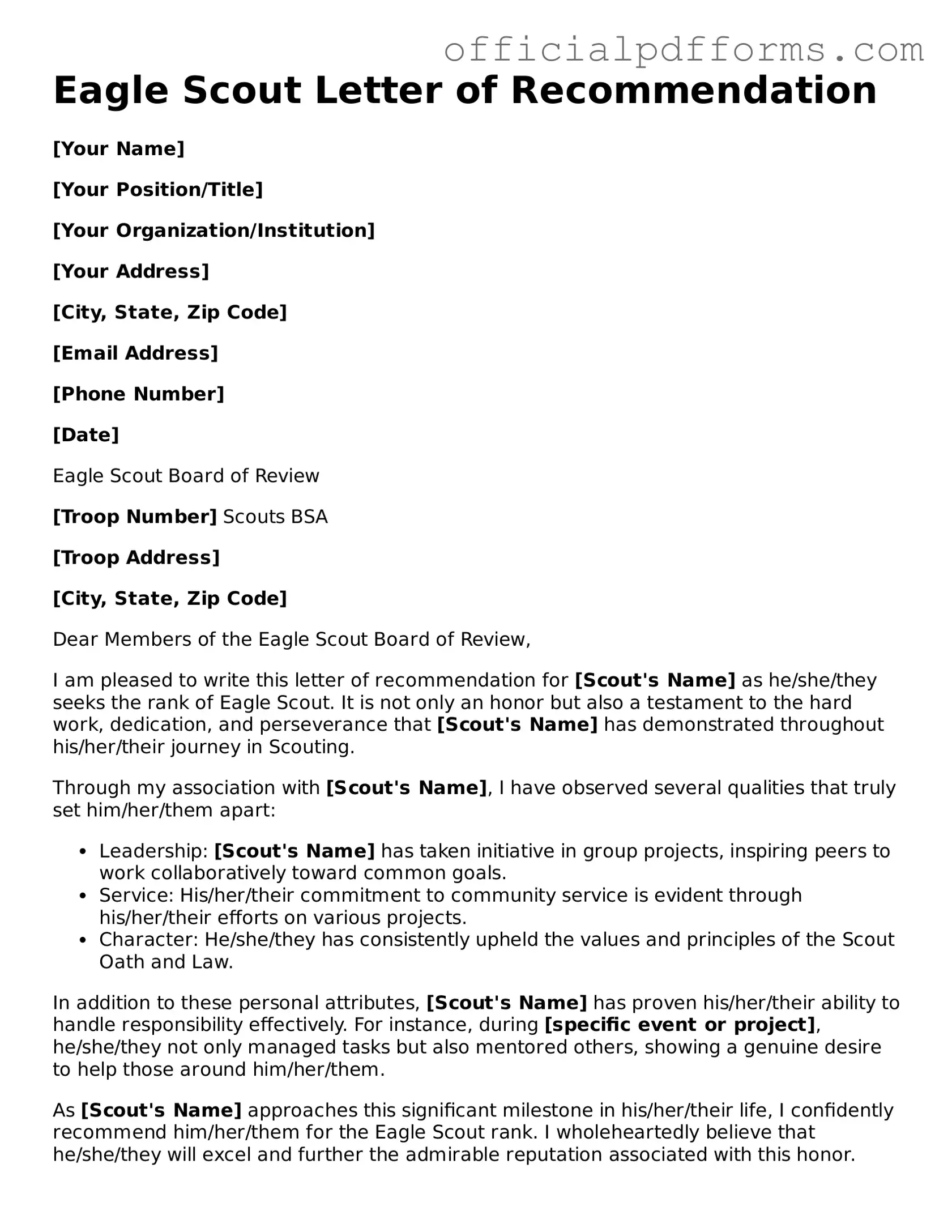The Eagle Scout Letter of Recommendation form is a document required for Scouts seeking to attain the Eagle Scout rank. This form allows individuals to provide recommendations that highlight the Scout’s character, leadership abilities, and contributions to the community. It plays a crucial role in the evaluation process by offering insight into the Scout's qualifications from a third-party perspective.
Who should provide a letter of recommendation?
Letters of recommendation should be written by individuals who know the Scout well and can speak to their character and achievements. Recommended sources include:
-
Teachers or school administrators
-
Employers or supervisors
-
Religious leaders or mentors
-
Community leaders or volunteer coordinators
It is important that the recommenders are not family members to ensure objectivity.
How many letters of recommendation are required?
The Eagle Scout application typically requires a minimum of three letters of recommendation. However, it is advisable to gather more letters if possible, as this can provide a broader perspective on the Scout's qualifications and character.
What should be included in the letter of recommendation?
A strong letter of recommendation should include the following elements:
-
An introduction of the recommender and their relationship to the Scout.
-
Specific examples of the Scout’s leadership skills and accomplishments.
-
Insights into the Scout’s character, values, and contributions to the community.
-
A summary of why the recommender believes the Scout deserves the Eagle Scout rank.
These components help provide a comprehensive view of the Scout's qualifications.
How should the letter be submitted?
Letters of recommendation can be submitted in various ways, depending on the preferences of the Scout and the local council. Options include:
-
Mailing the letter directly to the Scout’s unit leader.
-
Emailing a scanned copy of the signed letter.
-
Handing the letter to the Scout in a sealed envelope.
It is essential to ensure that the letter is submitted by the deadline specified by the local council.
While there is no strict format for the letter, it should be typed or neatly handwritten on professional letterhead if possible. The letter should include the date, the recommender’s contact information, and a formal salutation. A clear and concise writing style is encouraged to ensure the message is easily understood.
Can a letter of recommendation be retracted?
Yes, a recommender can retract their letter of recommendation if they feel that they can no longer support the Scout's application. It is advisable for the recommender to communicate this decision directly to the Scout and, if necessary, to the unit leader. Open communication can help manage expectations and maintain transparency.
What happens if a letter of recommendation is not submitted?
If a letter of recommendation is not submitted, it may impact the Scout's eligibility for the Eagle Scout rank. The application process may be delayed or incomplete without the required letters. It is important for Scouts to follow up with their recommenders to ensure that all necessary documentation is submitted on time.
